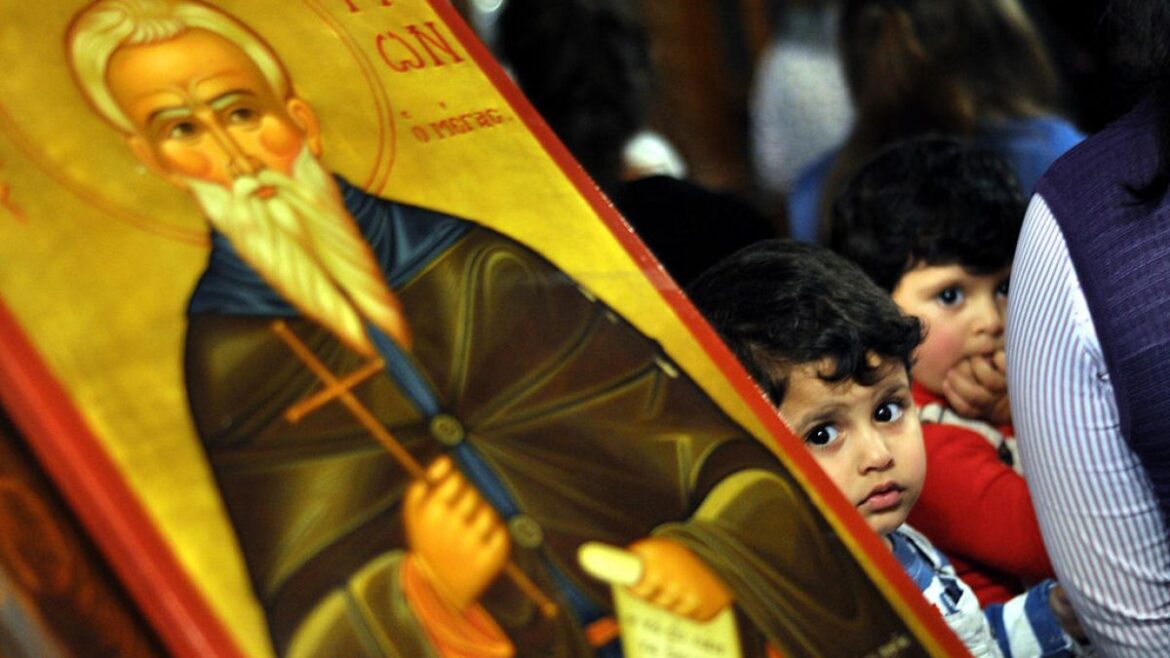A Greek saint who has a special status among the Christians of the East in general and the Christians of Palestine in particular. He assumed the position of Bishop of Gaza City and led a campaign against the pagans there, seeking the help of the Byzantine Empire. He also built a large church that bore his name after his death.
Birth and upbringing
Saint Porphyrios was born in the year 347 in the city of Thessaloniki (formerly Thessaloniki) in northern Greece to religious, noble parents. He received a good education and grew up in a committed environment.
Intellectual and religious experience
Porphyrios was influenced by his religious family, and despite his wealth, in his youth he leaned towards monastic life, where he traveled to Egypt – which was at that time a major religious center and home to Christian hermits, where he resided in the monasteries of Wadi Natroun and met many priests there.
Five years later, he moved to the wilderness next to the Jordan River and resided as an ascetic in a cave. However, he contracted a serious illness that prompted him to go after another 5 years to Jerusalem for recovery. After his recovery, he began evangelizing its residents and calling on them to read the Bible and embrace Christianity.
Bishop of Gaza City
After the death of the bishop of Gaza City in 395, Porphyrios was appointed in his place. Upon his arrival, he found that the city contained one church and a small number of Christians, while there were 8 pagan temples. He also faced severe rejection from the pagans, so he headed to Constantinople, the center of the Byzantine Empire, asking for help. From Emperor Arcadius. However, he did not receive the support he initially hoped from him, as the Emperor feared that the people of Gaza would leave and thus lose its taxes and duties, but his wife, Empress Eudoxia, encouraged the bishop.
Christian sources mention that Empress Eudoxia was barren, and when the saint found out about her, he prayed for her to give birth to a boy. She promised him to build a church if that happened, and this is what happened. After the birth of the child, he was able to build a large new church in the year 402, on top of “Marinon,” the largest and most luxurious of the pagan structures, by order and financial support from the Emperor. It was inaugurated in the year 407 and named after the Empress initially, then it bore the name of Saint Porphyrius after his death.
The Emperor also issued a decree ordering the destruction of pagan temples in Gaza and restoring privileges to Christians there. Thus, churches replaced pagan structures, and the Christian religion spread in the city.
Church of Saint Priverius
It is located east of Gaza City. It is considered the third oldest church in the world. It was built at the beginning of the fifth century AD. It was named after Saint Priverius and contains his tomb.
It has an area of 216 square metres, was built with stones 1.8 meters thick, and consists of two main parts. The first is the worshipers’ corridor, which can accommodate approximately 500 worshipers, and the second is the structure designated for performing religious rituals.
The church was built in the Byzantine style, and its walls and domed ceiling raised on marble columns are decorated with pictures and drawings of Christian figures who had an important impact on history, in addition to inscriptions and hymns narrating Saint Priverius’ fight against the pagans in Gaza.
Parts of the church have eroded over time and were damaged as a result of historical wars and natural disasters that occurred in the region. The church took the shape of a ship after its restoration in the late Ottoman era.
On October 19, 2023, the church was bombed by Israeli occupation aircraft during the aggression against the Gaza Strip, which led to severe damage to its halls and its general structure.
Death
Historians differed on the date of his death. Some say that he died in the year 419, while others say that he died in the year 450, but they agree that he died in Gaza City, and the church contains his grave in its northeastern corner.



